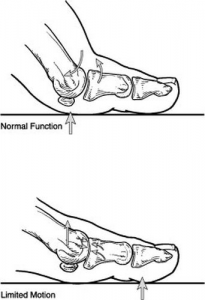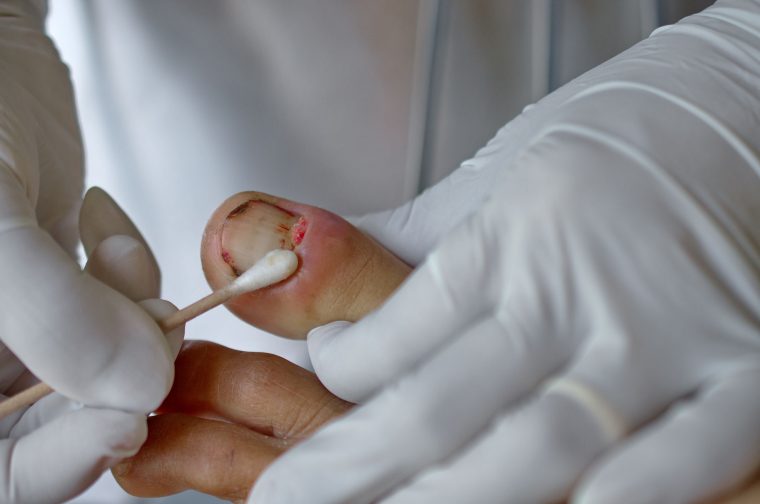
What is Hallux Limitus?
Hallux limitus refers to a condition where your big toe joint (first MTP joint) lost its range of motion. This condition can be troubling and painful as we use our big toe joint whenever we walk, stoop down, climb up or even stand. Since hallux limitus is a progressive condition, the toe’s motion decreases as time goes on and reaches the end stage of condition known as hallux rigidus where you completely lost range of motion at the big toe joint.
Hallux limitus can be very troubling and even disabling, since we use the big toe joint in many weightbearing activities such as walking, bending, climbing-up, or even standing.
Causes
- Faulty function (biomechanics) and structural abnormalities of the foot: Abnormal pronation may cause a person to put excessive pressure on the big toe and as the big toe joints need work harder to push off the body forward, the joint cartilage becomes overly compressed and damaged.
- Previous injury to the big toe joint: Stubbing the big toe or dropping a heave object on the big toe joint.
- Frequent wearing of high heel shoes or shoes that are too tight.
- Overuse: among people engaged in activities or jobs that increase the stress on the big toe joint such as workers who have to stoop or squat.
- Inflammatory arthritis (rheumatoid arthritis, gouty arthritis): Arthritis in the joint canbe attributed to repetitive strain or injury to the joint.
Symptoms
- Pain and stiffness in the big toe during weightbearing activities (walking, standing, bending).
- Pain and stiffness aggravated by cold, damp weather.
- Difficulty with certain activities (running, squatting) and wearing certain footwear (high heel).
- Swelling and inflammation around the big toe joint.
Diagnosis
- Clinical presentation and examination (range of motion, quality of motion etc.).
- Imaging: X-ray (weight bearing), or sometimes CT scan.
Treatments
Early treatment may prevent or postpone the need for surgery in the future. Treatment for mild or moderate cases of hallux rigidus may aim to reduce pain and stress in the big toe joint and these include:
- Footwear modifications: Shoes with a large toe box put less pressure on your toe. Stiff or rocker-bottom soles may also be recommended for patients who experience pain during gait cycle.
- Orthotics: Custom orthotic devices aim to fascilitate big toe joint and reduce pain.
- Medications: Oral nonsteroidal anti-inflammatory drugs (NSAIDs), such as ibuprofen, may be taken for pain and inflammation.
- Injection therapy: Injections of corticosteroids may reduce inflammation and pain.
- Physical therapy: Ultrasound therapy or other physical therapy modalities may be undertaken to provide temporary relief.






